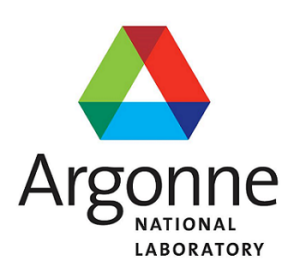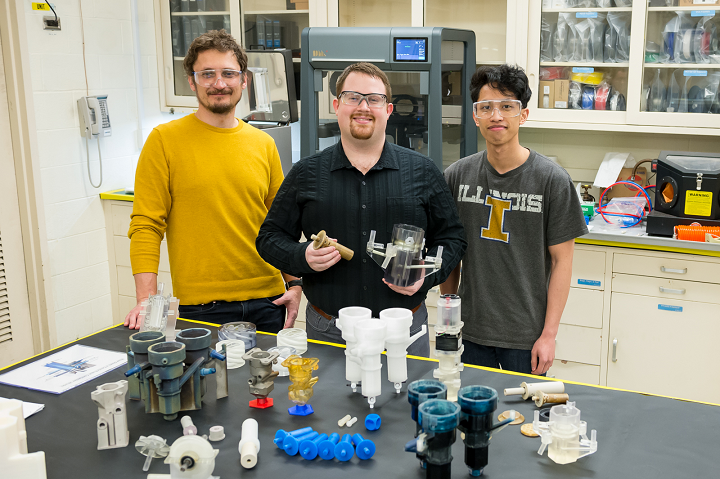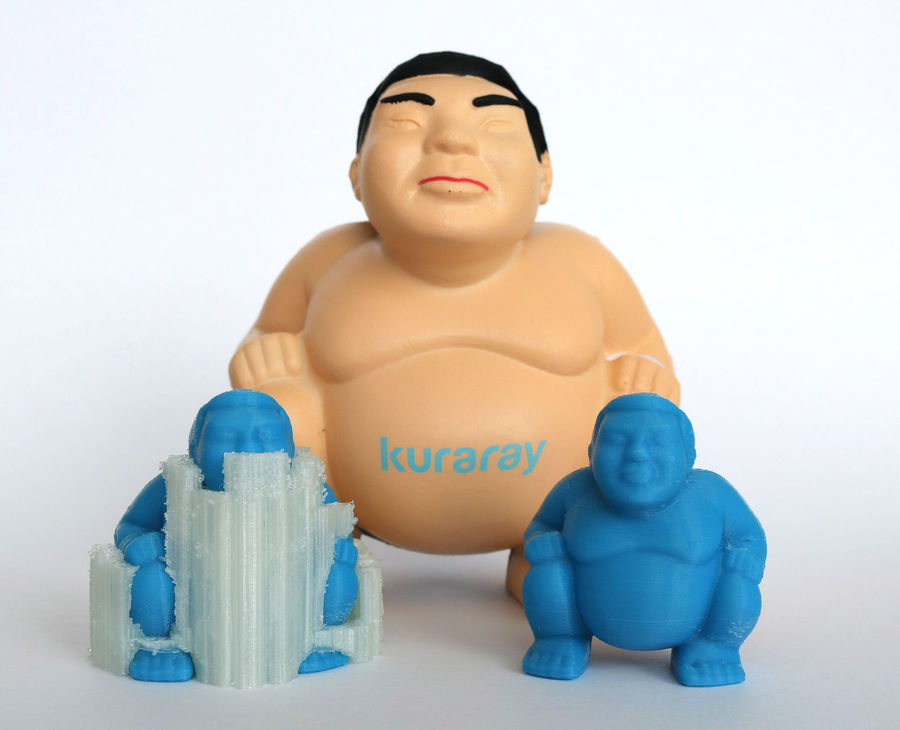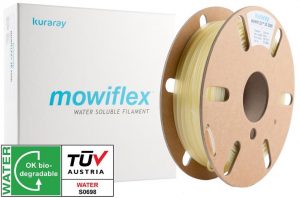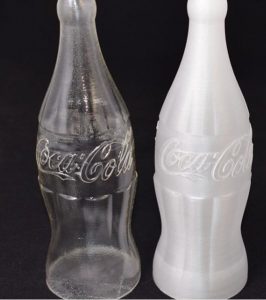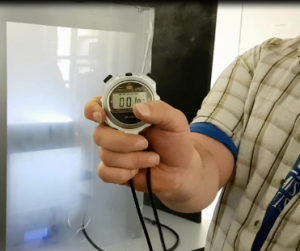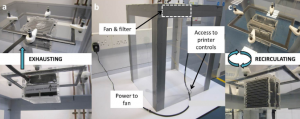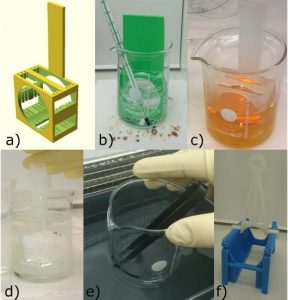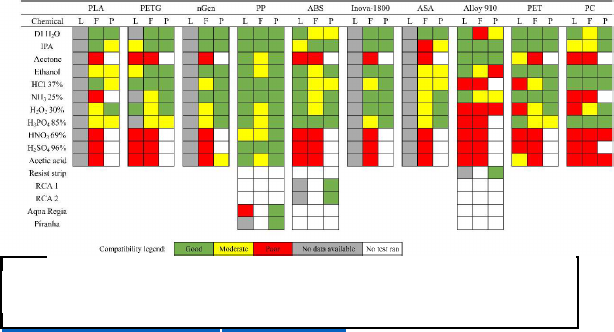With a lot of you essentially having started a medical device factory in your den, we’ve begun by detailing useful information for you to learn and consider. We urge you the utmost care and would like to remind you that GMP is the only really good basis for manufacturing this kind of thing. Likewise your materials processes and methods should all be checked and validated. A lot of very precise terminology is being used very loosely. We thought it best that we give you some good links to explanations and automotive sources on a lot of terms that we’re only used by some of our tribe and now increasingly are used widely. With regard to making medical devices and medical parts, there are a number of standards and terms that are very relevant.
Terminology
Biocompatible is a term that means that a material can work as intended in a human body without harming the body too much, this is a good guide on that. There are lots of different biocompatibility tests. There isn’t one magical “its biocompatible test” but many tests are conducted as a part of ISO 10993 and other standards and approval processes. Just because a material is called biocompatible does not mean that your handling of it will result in something safe nor that it will work for a new application or at a different site.
Cytotoxicity is when something is toxic to cells. In Vitro cytotoxicity tests are conducted “in glass” while in vivo tests are held in an animal. ISO 10993-5 deals with these kinds of tests and how they are to be conducted. Some things are referred to as in Vivo cytotoxic or in vitro cytotoxic. One can be used to derive safe limits for the other as well.
The NIH has a carcinogenic potency database. There is a distinction between known and probable human carcinogens. The IARC has a searchable database of its publications on over 400 carcinogenic materials. You can find a list of the IARC and NTP carcinogens here.
MSDS, SDS are Material Safety Data Sheets or Safety Data Sheets. Any and all vendors of a 3D Printing material should have this on file and readily available. Do not order from people who do not. This is clearly a sign of cavalier idiocy that should send your money elsewhere. There are search engines for SDS’s and you should be able to widely find them for all products. MSDS should tell you how to handle burns, how to dispose of the material, some of the materials it contains etc. Be aware that there is a huge variance in what and how much people disclose in MSDS. Specifically for 3D printing materials, MSDS are often vague and leave out a lot of additives.
A CAS Number is one unique number that is used to identify a particular chemical. Knowing and Googling the CAS number will tell you a lot about that molecule. Also, it saves you time and confusion. There are a number of CAS Databases such as CAS Registry and NIST Chemistry Webbook.
Tools for identifying chemicals and materials as well as learning about their safety.
PubChem is a great resource for learning about chemicals, the National Toxicology Program has a database called the Chemical Effects in Biological systems which is great as well.
With a design straight out of 1992, ITER is a comprehensive resource on risk assessment.
ECHA has a great search tool as well.
The ECHA’s C&L Inventory is a joy and gives you a simple info card on common chemicals.

SigmaAldrich is an online retailer for labware and chemicals. Their SDS search for Safety Data Sheets is a great tool, and often you can quickly identify a substance through using it. Fisher has a similar tool.
The NIOSH Pocket Guide to Chemical Hazards is a great downloadable and searchable book that gives you guidance on common chemical hazards.
Tests and Standards
USP Class VI Plastic Tests is a series of tests to help determine if a plastic is safe for use in medical devices. Of all the relevant material related standards this is the defining one for the moment.
“Class testing is often required for manufacturing drugs for its low toxicity compliance and strict bio-compatibility standards. It is important to know that no fluid-contact surfaces will result in harmful chemicals being extracted in to a conveyed fluid. Class VI testing extensively investigates the reaction in the body, skin, and living tissue to ensure safety. USP Class VI is a common standard for pharmaceutical tubing, fittings, single-use systems, and fabricated parts.”
ISO 10993-5:2009 is a standard for testing medical devices on their in vitro toxicity. So its an experiment in a petri dish meant to see if the device changes human cells in some negative way.
ISO 10993-10:2010 is a standard for medical devices on skin irritation and skin sensitization. Skin sensitization occurs when your body’s immune system responds to exposure through an allergic reaction. It is defined under OSHA and other rules, more detail can be found here. Partially or uncured SLA and DLP resins, 3D printing inkjet materials and some additives have been found to cause allergic responses such as this.
ISO 10993-12:2012 is a standard for biocompatibility tests with a focus on blood and fluid.
ISO 9001:2015 is a standard for manufacturing. It is a quality management system that once implemented and adhered to should mean that this firm can consistently manufacture things.
AS9100/EN 9100 is a certification for adopting a quality management system.
ISO 13485:2016 is a quality standard for manufacturing medical devices.
Directive 93/42/EEC is the main European Union directive for manufacturing medical devices. Other relevant directives are: AIMDD 90/385/EEC and IVDMDD 98/79/EC
GMP is a set of guidelines and standards for Good Manufacturing Practice that are needed to comply with regulatory agencies around the world when you manufacture food, drinks and pharmaceutical products.
CGMP is the Current Good Manufacturing Practice as regulated by the FDA. You can find these regulations here.
Class I,II etc.
In Europe medical devices are classed: Class I, IIa, IIb and III. I has the lowest risk and III the highest. In class I it can be strict if it is sterile or a measurement device such as a stethoscope. If it is neither, you can self certify by registering the technical documentation yourself and marking it with a CE mark.
Class IIa devices include surgical gloves and include the now popular respirators and other similar equipment. Here your self registry information goes to a government body for review.
Class IIb devices can be used for longer than a month and include ventilators and ER monitoring equipment.
Class III devices are the most risky and include medical implants. Here an audit and inspection may be needed.
The CE Mark itself can be done by you in ten minutes.
The CE Mark Medical Devices is only allowed when the correct conditions are met. But, in the case of a Class I device it could be done by you in ten minutes.
The US FDA also has a class rating system but this is of I, II and III. Most class I devices do not get any premarket review. These devices need a 510(k).
A 510(k) is a premarket notification whereby a device similar to an existing one is cleared.
This is in contrast to a more exacting Premarket Approval (PMA).
Some devices are 510(K) exempt which means that you have to register it and manufacture under GMP but don’t have to go through the approval process.
Face shields are FDA Class I devices and face masks Class II devices. As was explained in this article, there is a relaxation on face shields while there is none on masks. Michael’s recommendations on what you can make when are here.
NIH’s “clinical review” is based on uploading and having your device reviewed by NIH staff.
Hospital approved, is currently being used to mean that “St. Mary’s Hospital uses these shields.” In some hospitals an extensive review may be conducted by committees and have be based on testing and evaluation. Given the time span under which some of these so called approvals are occurring, we would caution when trusting this term however.
So generally we can say that a material would have to be made according to GMP at a relevant ISO certified site according to the relevant ISO norm with a quality system. It will have to be tested and pass USP Class VI. Then a device would also have to be made at least according to GMP. Ideally, a certified quality management system and the relevant ISO or other norms would have to be in place and the facility and all procedures will have to adhere to them. So if you’re buying parts or materials you’d like them to originate from these sources.
It is important to note that while skin sensitization testing and biocompatibility are important they do not guarantee safety. Even if the material conforms to all of these things and you as the manufacturer do not have the relevant procedures in place it will be unsafe.
The post Safety Suggestions for 3D Printing Medical Parts at Home: Standards and Terms appeared first on 3DPrint.com | The Voice of 3D Printing / Additive Manufacturing.


